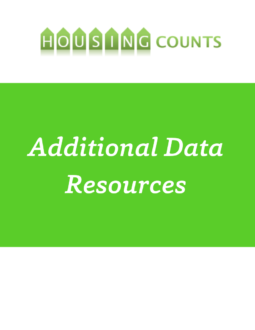Dig Deeper: Additional Data Resources
Data
HousingLink’s Streams is a searchable database of publicly-funded (subsidized) rental housing in the Twin Cities seven-county metro area. Streams contains data on rental housing with a long-term rent restriction (or direct rent subsidy) that makes it affordable for those earning 80% or less of the area median income (AMI). This includes public housing, Project Based Section 8, LIHTC (tax credit) properties, and many other programs funded locally. Streams does not include emergency shelter, transitional, or supportive housing.
Since 2002, Family Housing Fund and HousingLink have published the Housing Counts data set to provide housing leaders and other stakeholders an accurate and consistent way of tracking affordable housing (rental and homeownership) production and preservation in the seven-county Twin Cities region. Each year, the list of projects identifies how many affordable units are planned/preserved at 30 percent, 50 percent, and 60 percent of the area median income (AMI). It is important to recognize that when tracking new production and/or preservation of affordable housing, there are several points in time when a unit could be “counted.” HousingLink and the Family Housing Fund have chosen to count units in the year their funding first closes. Only developments with public and/or private capital funding that includes affordability obligations are listed.
City and Neighborhood Profiles
Minnesota Compass provides community profiles for cities and counties in the Twin Cities region, including detailed geographic profiles for neighborhoods within the Cities of Minneapolis and Saint Paul. Family Housing Fund engaged Wilder Research to create enhanced city profiles for all Cities in the region (with populations of 1000 or more) to support cities in their Comprehensive Plan updates.
The Metropolitan Council provides access to key information and trends about the Twin Cities region or any city, county, or township, including charts and data on population, employment, income and poverty, housing, commuting, land use, and development.
Minnesota Housing’s community profiles present statewide data elements necessary to successfully respond to various proposals from Minnesota Housing Finance Agency by geographic location. This includes specific indicators, key data points and geographic priority areas in an easy interactive mapping tool.
Community Indicators
The Metropolitan Council also publishes a region-wide 2040 Housing Policy Plan Indicators Dashboard that serves as the foundation for continuous improvement, public accountability, and dialogue between the Metropolitan Council and their partners and stakeholders. The indicators are updated annually.
Minnesota Compass provides an overview of housing indicators, among other data. Minnesota Compass is a social indicators project that measures progress in our state, its seven regions, 87 counties and larger cities, tracking trends in topic areas such as education, economy and workforce, health, housing, public safety, and a host of others.
The Minnesota Housing Partnership provides state-wide data on market trends and housing affordability, compiles profiles for each county and legislative district, and frequently releases new reports on specialized topics.
